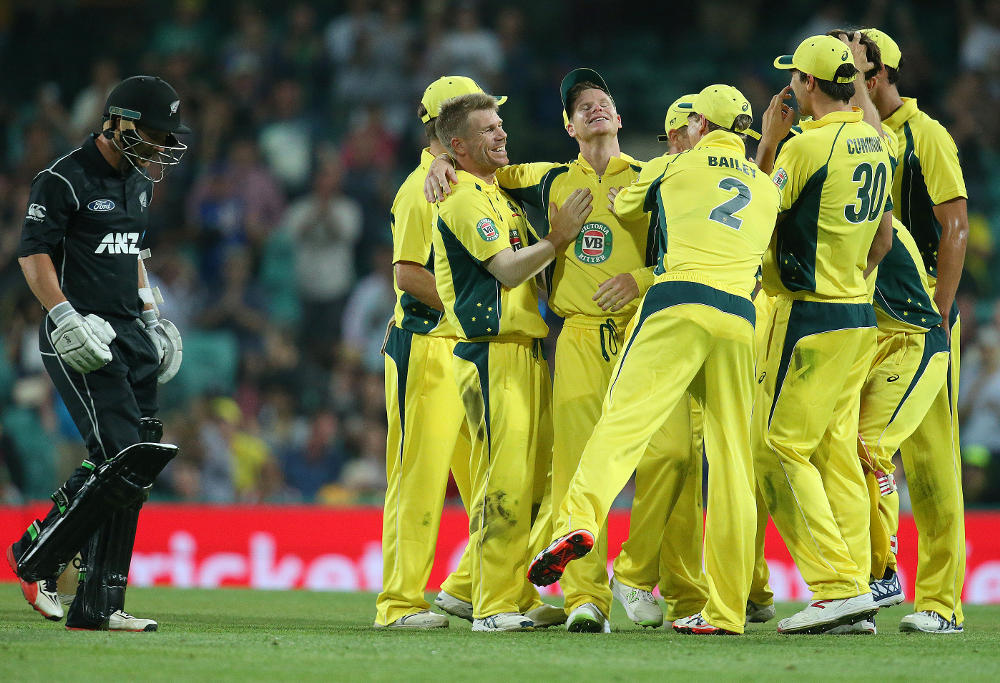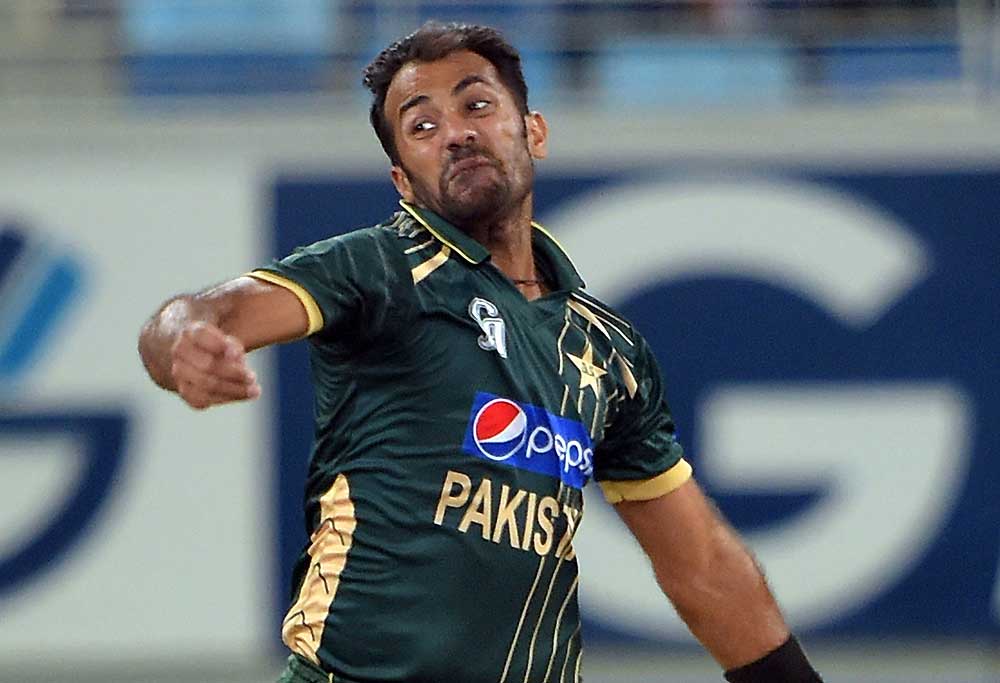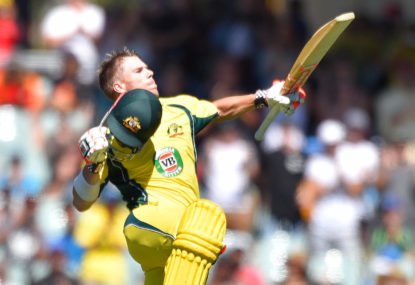Australia do not have another ODI series before the upcoming Champions Trophy, so where do they sit among the challengers for that tournament? I’ve rated the eight teams involved in this 50-over event.
Australia (1st)
Australia have made a habit of peaking for the major ODI tournaments. In 2007, Australia entered the World Cup having lost five of their past six ODIs, including a 3-0 loss in New Zealand and a 2-0 defeat to England in the final of the home summer tri-series.
Many pundits and fans wrote them off for the World Cup. They were past their best, apparently.
Australia didn’t care and simply set about dominating that World Cup in the most extraordinary fashion, winning all 11 of their matches by margins which ranged from massive to comfortable.
Now Australia have lost their past seven ODIs on the road. Again, people are doubting their ability to triumph in the upcoming Champions Trophy in England. Australia are not the most gifted ODI team in the world – South Africa have as much, or maybe even more, talent. But Australia are masters at winning ODI tournaments and their incredible record undoubtedly intimidates opponents.
The Aussies have won four of the past five World Cups and two of the past three Champions Trophy tournaments. Crucially, Australia have statistically the world’s best ODI attack, as I outlined recently. In Mitchell Starc, Josh Hazlewood and Pat Cummins they have three pace strike weapons capable of turning matches in the space of a few overs. James Faulkner and Mitchell Marsh offer them great depth with the ball.
Australia’s batting is not as strong. But a top eight of David Warner, Usman Khawaja, Steve Smith, Travis Head, Glenn Maxwell, Marsh, Matt Wade and Faulkner contains enough ability, experience and power to challenge any attack.
Throw in their elite fielding and I have Australia as narrow favourites to win this tournament, a skerrick ahead of the Proteas.

South Africa (2nd)
The Proteas have been an elite ODI team throughout most of the past 25 years, yet they’ve never managed to fully cash in on that talent; not once have they made the final of the World Cup. They did, however, win the first-ever Champions Trophy, although back then in 1998 it was known as the Wills International Cup.
The Proteas have a very gifted and experienced batting line-up, featuring four elite ODI batsmen in AB de Villiers, Hashim Amla, Quentin de Kock and Faf du Plessis, plus the very solid JP Duminy. Their bowling is similarly potent, although they will miss the penetration and leadership of spearhead Dale Steyn, who is not expected to be fit to play.
In Kagiso Rabada, Morne Morkel and Imran Tahir they have three of the finest strike bowlers in ODI cricket. The mental hurdle in major limited overs tournaments remains but, as always, South Africa have the talent to go all the way.
England (3rd)
England are the most poorly balanced of the big five teams in this tournament – their batting is ballistic but their bowling is putrid. As I outlined in a recent piece, statistically England’s ODI attack is by far the worst out of Australia, South Africa, India and New Zealand.
England do not have a single bowler who would make it into the starting line-ups of Australia or South Africa.
The English batting line-up has incredible power though thanks to Jos Buttler, Jason Roy, Alex Hales, Joe Root and Ben Stokes. Since the last World Cup, England have been the highest-scoring team in the ODI format.
Their batsmen need to make big runs because of the way in which their bowlers leak them. To highlight just how loose the English ODI attack is, consider this: six current England bowlers have worse career economy rates than any Australian bowler in history.
Those six bowlers – Stokes, Chris Woakes, Adil Rashid, Liam Plunkett, David Willey and Chris Jordan – all could appear at the Champions Trophy. Regardless, England remain a chance of lifting the trophy due to home advantage and the ferocious strength of their batting.
India (4th)
India are the defending champions, having won the last Champions Trophy in 2013. That tournament was also held in the UK, which underlined the ability of the Indian 50-over side to adapt to foreign conditions. This was also apparent in the last World Cup when India flourished in Australian conditions, only to be knocked out by the hosts in the semi-final.
In captain Virat Kohli they have the greatest batsman in ODI history, a behemoth who bends matches to his will. Rohit Sharma and Shikhar Dhawan are an elite opening pair, Ajinkya Rahane is a stable presence in the middle order and keeper-batsman MS Dhoni remains a force.

On the bowling front, India will be greatly strengthened if quality quick Mohammed Shami can return to fitness and form. Shami was outstanding at the 2015 World Cup, taking 17 wickets at 17. That tournament also featured a breakout effort by express paceman Umesh Yadav, who was the third-highest wicket taker with 18 wickets at 18.
Shami and Yadav can potentially form a strong pace battery with newcomer Jasprit Bumrah. The right-armer has made a storming start to his ODI career, reaping 22 wickets at 22 from his 11 matches.
That trio will be well complemented by India’s group of impressive spinners – Ravi Ashwin, Ravi Jadeja and Amit Mishra. All three of those tweakers are also very handy with the bat, giving India impressive balance.
New Zealand (5th)
New Zealand are not the same team they were at the 2015 World Cup – they’ve been weakened by the loss of dynamic opener Brendon McCullum, inspirational all-rounder Grant Elliott and champion spinner Dan Vettori. But in Trent Boult, Kane Williamson and Martin Guptill they have three of the most valuable players in the format.
The Kiwis remain a good 50-over side, as Australia found out recently when they were defeated 2-0 in New Zealand. They do, however, lack the depth of talent boasted by the four teams ranked above them here. That places heavy pressure on the aforementioned star trio to fire if the Kiwis are to win this tournament.
Pakistan (6th)
Despite losing 4-1, Pakistan should have benefited greatly from their five-match ODI series in Australia last month. ODI pitches in England in recent times have been quite similar to those in Australia – hard and brimming with runs.
In Mohammad Amir, Junaid Khan and Wahab Riaz, Pakistan have a trio of left-arm quicks who can be lethal when in rhythm. Meanwhile, young right-arm seamer Hasan Ali had a terrific series against Australia, snaring 12 wickets at an average of 25.

If that quartet can peak during the Champions Trophy then opposition batting line-ups will have a difficult time against Pakistan.
Consistency is not the strong point of the Pakistanis with both bat and ball.
Bangladesh (7th)
Over the past two years, Bangladesh have a better win-loss ratio in ODIs than England, Sri Lanka, Pakistan or the West Indies. What they lack, however, is recent experience and success away from their familiar home conditions. Since the last World Cup, almost two years ago, Bangladesh have played 18 of their 21 ODIs at home.
They lost all three of their matches on the road, swept in New Zealand last December. Bangladesh have a solid top six, good spin options, a brilliant all-rounder in Shakib al-Hasan and one of the most exciting young players in world cricket, paceman Mustafizur Rahman.
They might be able to cause an upset or two but, outside of Asia, they are no match for heavyweights like Australia and South Africa.
Sri Lanka (8th)
The Sri Lankans punched above their weight in the 50-over format for many years. Right now, however, they are in a rebuilding period due to the retirements of legends Kumar Sangakkara, Mahela Jayawardene and Tillakaratne Dilshan, and the continuing unavailability of pace ace Lasith Malinga.
While Sri Lanka still have enough batting talent to put up competitive totals, without Malinga they badly lack strike power with the ball. They would need a lot of things to fall their way to win this tournament.
































































































